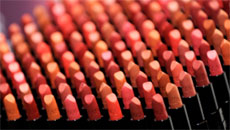Body image refers to a person’s own feelings and perception of one’s own body and physical appearance. This can include how satisfied one is with their appearance and how important physical appearance is when determining self-worth.
Having a healthy body image means you like your body. It means you appreciate your body for what it is or what it does for you. Those with a healthy body image are not only happy with what they see on the outside, but they recognize that they are worth more than just the way they look.
Unfortunately, there is often a discrepancy between the perception of one’s own body and the societal standards of what is considered important and what is considered beautiful.
Being dissatisfied with your body can greatly impact your behaviour and lead to a variety of serious consequences. “Having a negative body image is a well-established risk factor for the development of eating disorders and Body Dismorphic Disorder – a significant preoccupation with an imagined or slight defect in appearance,” says Michele Kambolis, clinical director at Harbourside Family Counseling Centre.
“People who have a poor body image are also more likely to engage in unhealthy behaviours such as extreme dieting, exercise compulsion, laxative abuse, vomiting, smoking and use of anabolic steroids. In addition, body image is closely correlated with low self-esteem, which is a risk factor for early sexual activity, substance use and suicidal thoughts.”
Our size, weight, shape and looks are largely determined by a mix of lifestyle and genetics. Being tall may be a family trait and a love for athletics may make losing weight easy. These differences, in both our genes and our decisions, heavily contribute to what our bodies are destined to look like.
Thankfully, these differences make us all unique and, therefore, make what is normal for one person not necessarily what is normal for their neighbour.
A normal body is a healthy body. And just as normal varies from person to person, so does healthy. A healthy body is dependant on many factors including height, weight, body fat, fitness levels, dietary choices and hydration. Just because someone looks healthy does not always mean that they are.
Factors such as height-to-weight ratios, body mass index levels and muscle-to-fat ratios are all better indicators of a healthy body than comparing your size or shape to that of others. Healthcare professionals and fitness experts are trained to use a variety of measurements that help them to determine how healthy one may be. Jumping on a scale or looking in a mirror are poor indicators of health alone despite society’s reliance on these two tools.
While we may have a healthy body, the way we perceive our body is influenced by many external factors. Family, friends, social expectations, our own abilities and the media all effect how we see ourselves and how we think others see us as well. What we hear from our friends or watch our parents do contributes to what we in turn think or do when we eat, exercise or aim to impress. What we see in magazines, movies and advertisements all affect what we see when we look in the mirror.
According to information compiled by Media Educator Frank W. Baker, “one study of Saturday morning toy commercials found that 50 per cent of commercials aimed at girls spoke about physical attractiveness.”
“After 18 years of treating children and youth I’m alarmed by the number of young people, who report they’re unhappy with the way they look,” says Kambolis. “With the introduction of new technology, today’s youth are surrounded and bombarded by more media images than any generation before them. Add to that, the use of Photoshop creates completely unrealistic and unattainable standards of beauty – images that distort truth and at the same time distort a youth’s idea of realistic body shape.”
Matthew Johnson, director of education of MediaSmarts, shared a similar conclusion. “Media images start to shape our ideas of what we should look like from very early on: toys such as Barbie dolls and action figures have been shown to have an influence on children’s perception of their bodies,” says Johnson, recalling two studies on just those specific topics alone.
Despite the multitude of factors that play into our unhealthy habits, the media has been largely blamed for setting unrealistic expectations that we must look a certain way and distorting our perception of a healthy body. Kambolis shared some alarming statistics that demonstrate just how powerful media can be: 47 per cent of girls in grades 5-12 reported wanting to lose weight because of magazine pictures and 69 per cent of them reported that magazine pictures influenced their idea of a perfect body shape. The Dove Real Beauty Campaign reports that 42 per cent of first to third-grade girls want to be thinner, while 81 per cent of 10 year-old-girls are afraid of getting fat.
Additionally, media outlets seem to be on a constant mission to help us fix our flaws. You have wrinkles? There’s a cream to eliminate them. Your hair is dry, flat or frizzy? There are products to moisturize, volumize and de-frizz. Your sweat smells like...sweat? There’s a body wash that will not only improve your scent, but will also make you irresistible to the opposite gender.
The list of products that whiten, straighten, or cover-up could go on and on. And what this tells us is we have a long list of problems with our appearance.
“The conversation around body image has departed from mainly being a discussion of weight and has become more complex, involving beauty “ideals” ranging from how white your teeth are, to how big your biceps are, to how light or tanned your skin is, to how arched your eyebrows are…,” says Kambolis. “These images create a standard of beauty that is attainable by no one! It’s little wonder North American society is experiencing an epidemic of body image issues.”
So where does that leave the short, muscular mixed race teen who doesn’t wear makeup? Unfortunately, without much of a role model in the media.
It is often quoted that comparison is the thief of joy. And yet we continue to compare. We compare ourselves to the models in advert- isements, with the perfect skin, long, dark eyelashes and smooth silky hair. We compare ourselves to the strong, sexy superstar athletes that win games and then win the girls. We compare ourselves to the made-up movie stars, who have personal trainers, makeup artists and cinematography at their disposal. And yet all these comparisons do is take away any happiness we might have had with our own bodies. Any traits that we once liked, we now compare it to someone who is slimmer, taller, smaller or prettier than we think we are and we are no longer content with our own unique qualities.
“Media contains powerful images that we naturally compare ourselves to and this comparison has an overwhelming effect on our body image. One study showed that flipping through a fashion magazine for just three minutes lowered the self-esteem of 80 per cent of female participants!” Kambolis notes.
We begin to believe that we are defined by our looks.
Society doesn’t often highlight accom- plishments and with many money-making industries fuelling the belief that you have to be beautiful, it’s not really a surprise that ap- pearance gets all the attention. As reported by the National Eating Disorder Information Centre, the diet industry is “a $33 billion per year commercial enterprise that guarantees
that repeat customers by pro- moting misconceptions about health and weight.” Accord- ing to ‘In Your Face: The Cul- ture of Beauty and You’ by Shari Graydon, more money is spent on beauty products in the United States annu- ally than on education. This amount includes over $6 billion on makeup alone.
If we don’t celebrate our accomplishments, we rely on our looks because it is something we believe we can change or master. It seems easy to alter our appearance as we’re lead to believe that purchasing a few products or losing a few pounds will transform us into the pretty picture that we want to be. This seems easier than being recognized for working our way up at work or acing a course at school.
Unfortunately, it is a tough problem to patrol. “Some nations and other jurisdictions have made laws or regulations regarding photomanipulation, but it’s unlikely that either Canada or the United States will do so,” says Johnson. “While they may serve a useful purpose in drawing attention to the issue, these laws are unlikely to have much of an effect due to the international nature of media. What’s more likely to be useful is to educate young people about the constructed nature of media and help them learn to ask questions about the media they consume.”
Being interested in our appearance is not uncommon. We all strive to look our best and taking pride in how we portray ourselves is not unhealthy. When we become consumed with comparing ourselves to others and to the unrealistic expectations that society seems to set for us is when it’s time to make a change. An unhealthy body image often leads to unhealthy actions. Reversing this trend is necessary as the negative consequences can have long-lasting effects on our physical and mental well-being.
Being happy when you look in the mirror and see who is looking back at you is more important than just a reflection.






